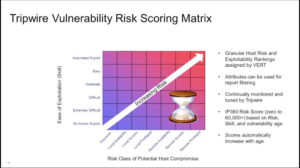example of a vulnerability scanner
What is a vulnerability scanner? These programs are software applications that target areas of an organisation’s IT ecosystem that are open to the public. They do not only target vulnerable systems and applications that are exposed to the public, but they also detect vulnerabilities within the organisation’s internal network. When used properly, they can identify and remediate known security weaknesses. They provide the information necessary to harden systems and applications. Listed below are examples of the tools that vulnerability scanners use.
A vulnerability scanning is software that probes an information network or computer system to identify weaknesses and possible points of attack. The program compares the details of the target’s attack surface against a database and attempts to exploit each vulnerability. Because vulnerability scanners are intrusive into the code of the target machine, they can reduce productivity. To prevent this, they should be performed only by security experts. However, some programs can also cause problems on the machine itself.

External vulnerability scans are conducted from the outside of an organization’s network perimeter. They assess external exposures of the network. They are often complemented by internal testing. To ensure full coverage, use a different vulnerability scanner for internal and external scanning. There is no such thing as a perfect vulnerability scanner. The accuracy of a vulnerability scanner depends largely on the database of checks it uses. However, these programs can help your organization detect and remediate vulnerabilities.
What is an example of a vulnerability scanner?
Web application scanners are another type of vulnerability scanner. They focus on finding weaknesses in web applications. Their traditional methods involve crawling through websites and sending probes to forms, while web application scanners focus on the application code. The benefits of web application vulnerability scanners outweigh their downsides. These scanners can be especially useful for enterprise-level security. However, web application vulnerability scanners are not suited for network infrastructure vulnerabilities.
Another example of a vulnerability scanner is Nessus. This vulnerability scanner is available as a free download and is open-source. The program can scan up to 16 IP addresses and includes several unique features. It also provides pre-packaged scans for specific compliance needs. For example, if you’re looking for PCI compliance, Nessus is an excellent tool for this purpose. With over 59,000 CVEs, it will find any security holes on your network.
The process of vulnerability scanning is an ongoing process that is often overlooked in favor of more sexy cyber security terms. The use of a vulnerability scanner allows your company to assess the security of the software and network. This process is ongoing and new vulnerabilities are discovered every day. A vulnerability scanner helps to identify and fix vulnerabilities before they become an issue. It is important to understand the process and the benefits of vulnerability scanning before you choose a vulnerability scanner.